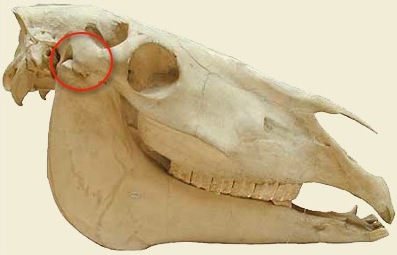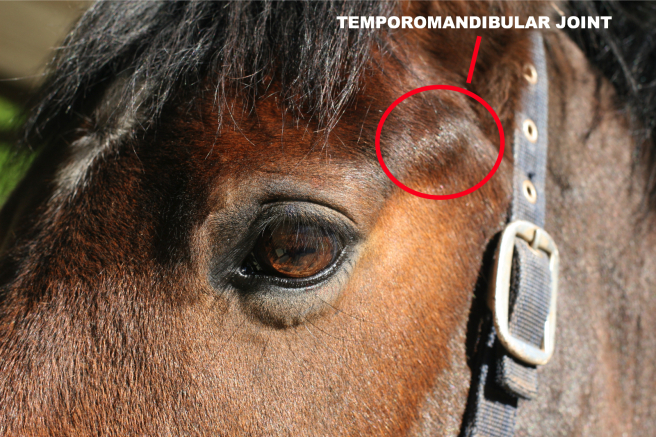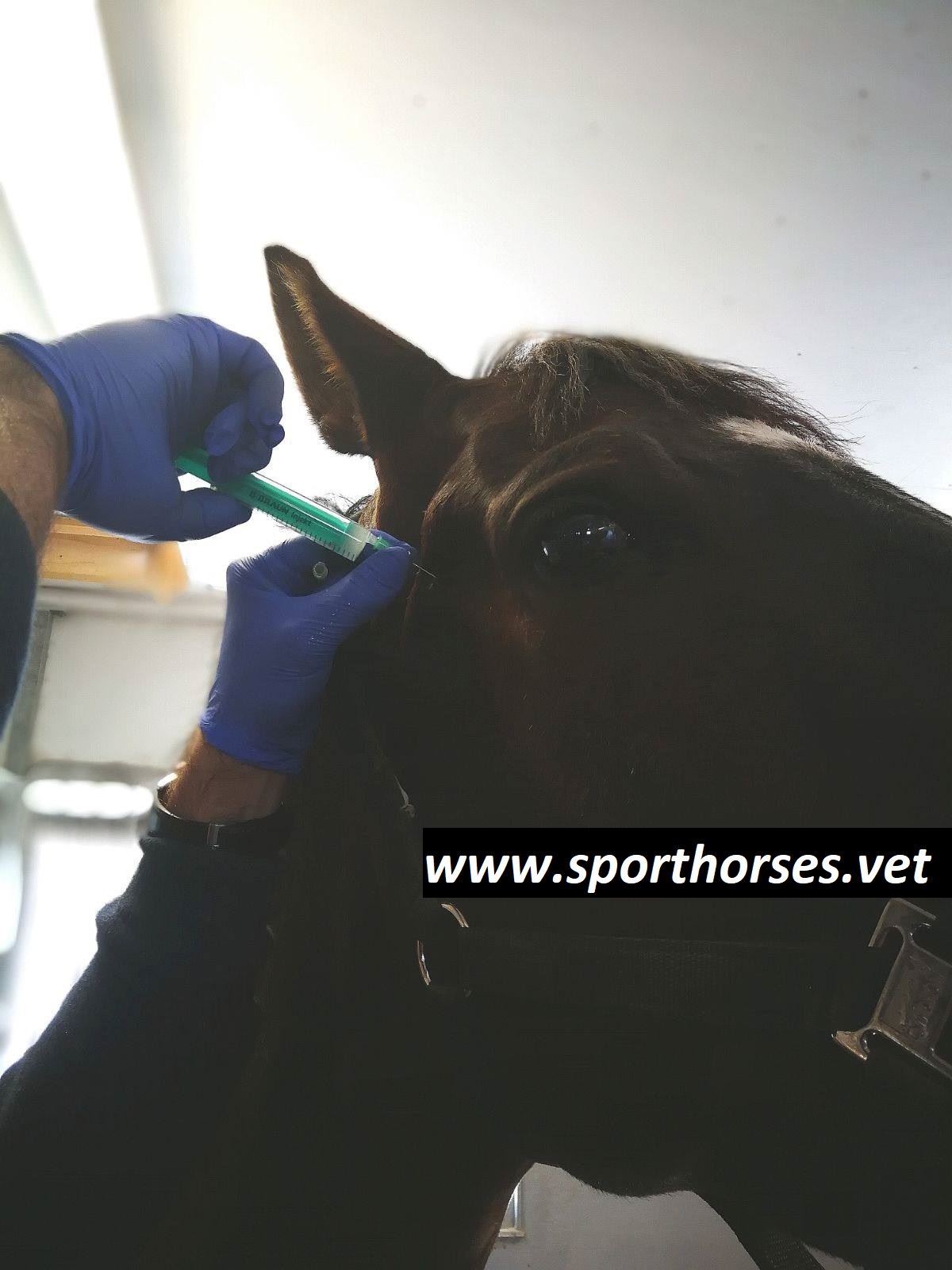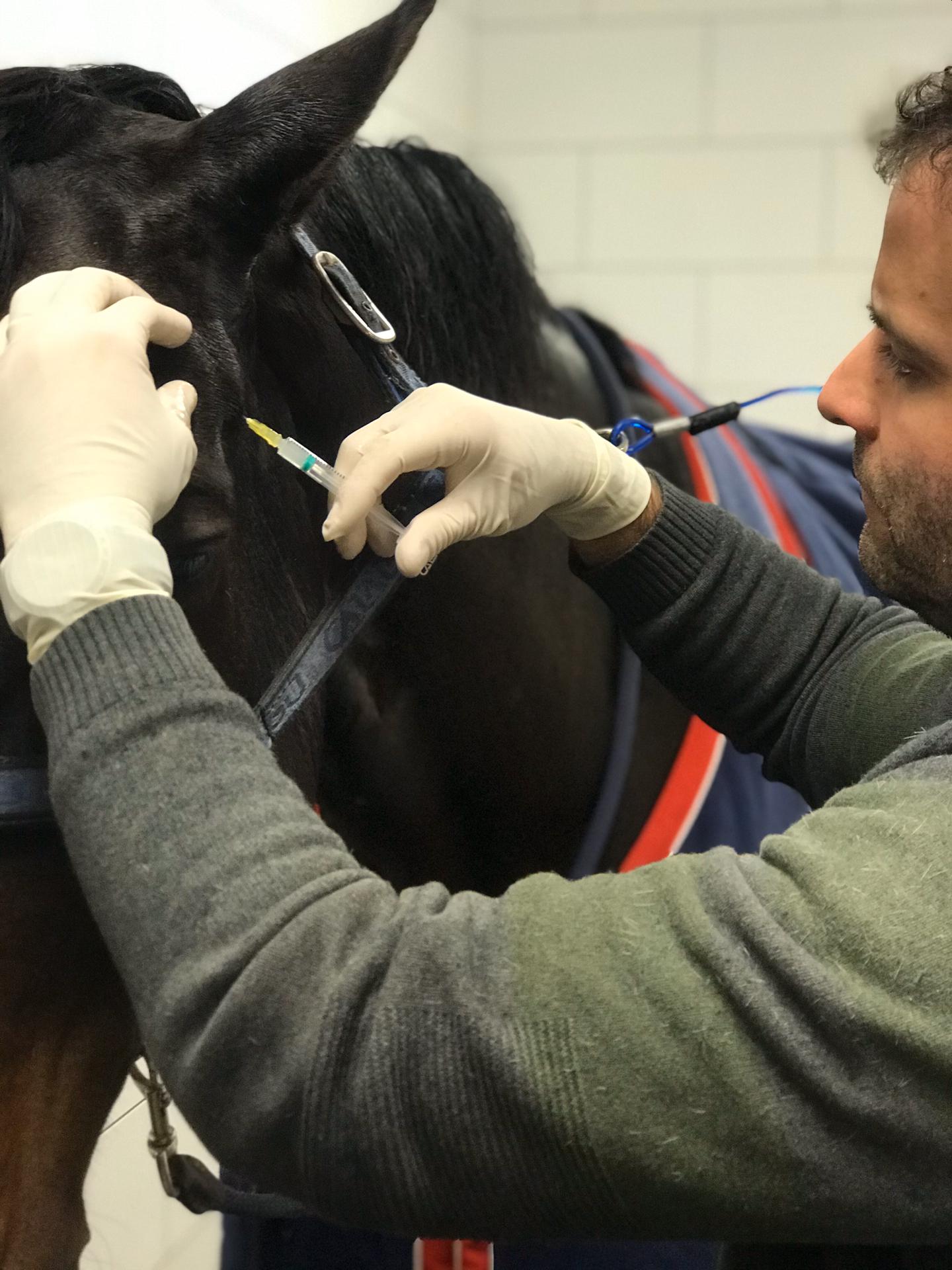TEMPOROMANDIBULAR JOINT DISEASE (TMJ)
Many horses resist the oral speculum used to keep the mouth open by applying back pressure, subluxating (partially dislocating) one or both TMJ. Approximately 35% of horses diagnosed with temporomandibular joint disease were observed with an oral speculum within the 6-month period prior to the initial examination.
In more severe cases, horses may have difficulty chewing hard objects such as a cube of alfalfa, a carrot or a sugar cube (even if they have an excellent appetite).
In about half the macroscopic enlargement of one of the temp
oromandibular joints is visible during the clinical examination. Excessive protrusion of the joint may be evident by seeing the head directly at eye level. In severe cases, there may also be joint effusion (ie, extra-articular fluid) and / or associated inflammation of the soft tissues (edema). In general, one joint (the most affected) is visibly larger than the other.

TEMPOROMANDIBULAR JOINT HORSES
In our experience, a positive response to digital palpation of the ventral (lower) joint pouch in horses with TMJ inflammation / pain is almost always observed. The degree of diagnostic confidence increases dramatically if one joint constantly causes more reaction than the other, and the most painful part correlates with a history of directional resistance.
Although diagnostic imaging (such as radiographic examination) may be useful during the evaluation of TMJ disease, this modality alone can not confirm or deny the diagnosis in our opinion. Most horses with cases (even severe) of arthritis will have a normal radiographic appearance in the TMJ. Th
erefore, this strategy is used more to determine the prognosis of future performance instead of confirming a diagnosis of TMJ disease.
WHAT IS THE TEMPOROMANDIBULAR JOINT (TMJ)?
The TMJ represents the joint between the upper jaw (maxilla) and the lower jaw (mandible). There are two TMJ’s, one on the right side and one on the left side of the head. These joints are used to open and close the mouth.

WHAT ARE THE CLINICAL SIGNS OF THE TMJ DISEASE?
Pain in TMJ usually manifests as a rapid and involuntary shaking of the head.
For example, horses tend to react more violently during certain movements, such as the gallop collected. In some cases, the horse will raise its head up in the air, refuse to move forward and will even retreat.
As you can guess, TMJ disease is often confused with other musculoskeletal problems that manifest as behavioral resistance or head shaking. Unlike most other problems, however, the pain of TMJ can easily be brought about by applying the
tension of the rein on the standing horse (does not move). If the problem only becomes evident when the horse is in motion, TMJ disease is not a probable cause.
WHAT CAUSES TMJ’S DISEASE?
Although it is usually difficult to identify a primary cause, subluxation of the TMJ is more commonly involved in the initial “trigger” of instability and pain within the joint.
TMJ is also considered by many to be genetically induced, although this has not yet been clinically demonstrable.
HOW IS TMJ’S DISEASE DIAGNOSED?
The story is usually very specific for this problem and is one of the main tools used in the diagnosis. The rider will complain of head shaking, refusal to move and manifest resistance to move in one or both directions.
The recent history of oral examination and / or tooth flotation can be another important piece of the diagnostic puzzle. be easily accessed with a needle and respond well to intra-articular therapy (local injection). The dorsal and ventral joint bags are usually treated separately to ensure adequate dispersion of the medication within the entire joint.
In more than 50% of the cases we evaluate, the TMJ’s unique (one time only) treatment permanently solves the problem. When performing oral procedures on horses with TMJ disease, we strongly recommend the use of broad sedation to reduce the risk of speculum resistance and subluxation of the secondary joint.
In cases of long-term and / or severe TMJ instability, multiple (serial) treatments may be necessary to maintain optimal performance. Fortunately, we have observed minimal deleterious effects within the ATM as a result of multiple injections.
These joints seem to be very lenient with regard to this form of therapy, which makes this technique one of our “frontline” approaches to successfully address this problem in the horse.

HOW IS TMJ’S DISEASE TREATED?
We implement the same principles for TMJ treatment that we do with other joints in the horse.
Fortunately, ATMs canThe temporomandibular joint (TMJ) of the horse resides just below and in front of the base of the horse’s ear on each side of the head. Movement within the joint is easily visualized when the horse is chewing. As with any joint, the TMJ may become unstable, inflamed and, therefore, a source of pain. Pain in the temporomandibular joint can decrease performance, especially during periods of increased tension with the reins.









No Comments